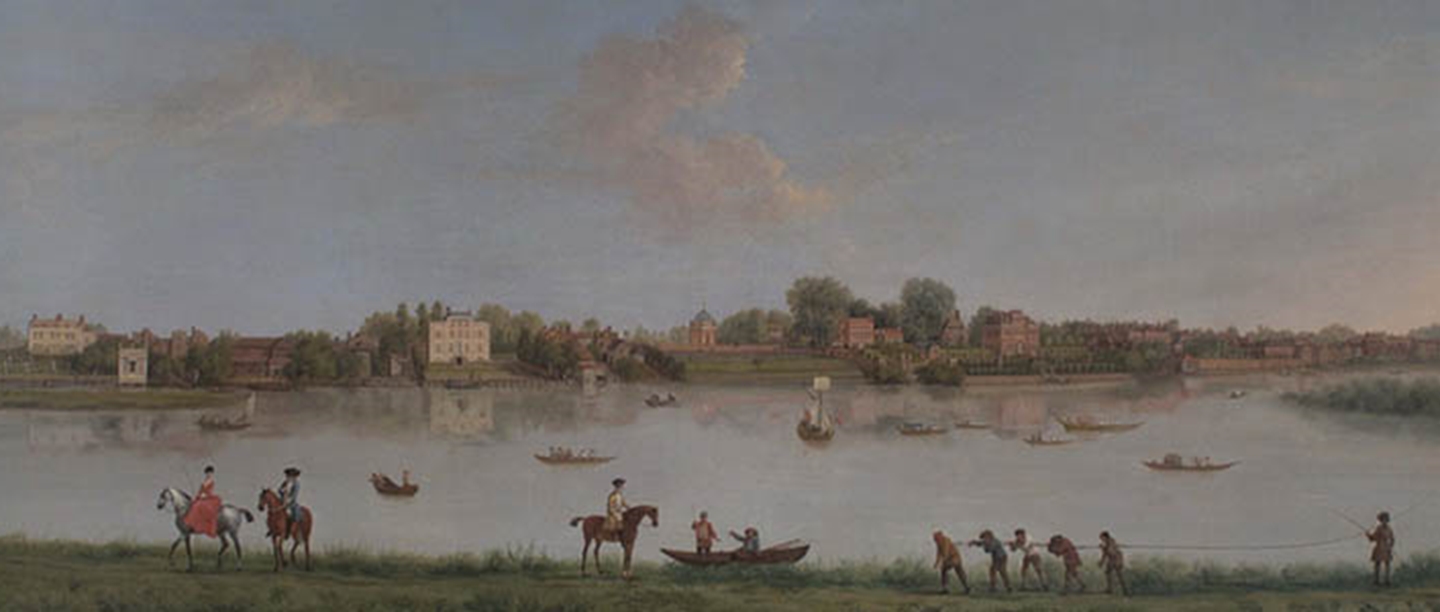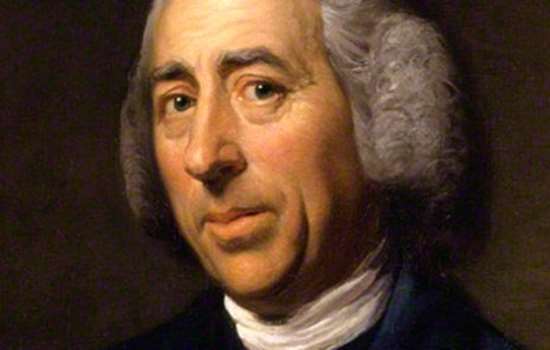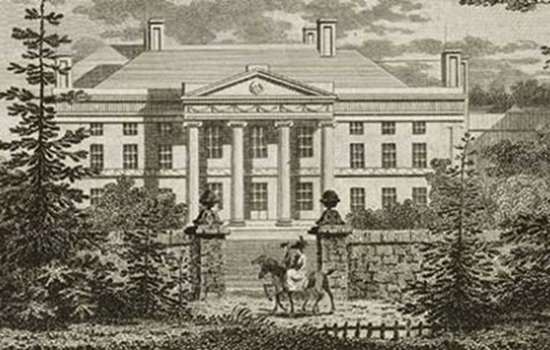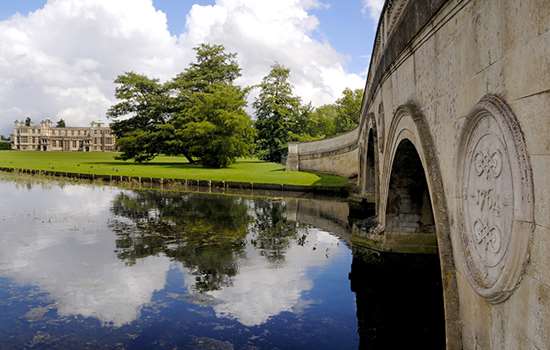
Alexander Pope is famous for his contribution to poetry and literature at the beginning of the 18th century. Perhaps less well known was his passion for gardens, and his impact on the historical garden design. Pope was at the forefront of new ideas at the time, setting the scene for some of the biggest changes in garden design in his time.
An intellectual in Chiswick
Pope was born in London on 21 May 1688 into a Catholic family. The laws and penalties laid out against Catholics in this period were to shape his early life. After spending his adolescence living in Windsor Forest, by 1716 the Pope family was living in Chiswick – a blue plaque marks his time living at Mawson’s buildings in Chiswick Lane South. By this point Pope had already written some of his most famous works including An Essay on Criticism (1711) and The Rape of the Lock (1712). During his time at Chiswick he was also working on his translation of the Iliad. He formed friendships with some of the leading intellectuals and poets of the time, including Jonathan Swift and John Gay.
After the 1715 Jacobite rising, the social position and wealth of Richard Boyle, the 3rd Earl of Burlington, owner of Chiswick House, meant that he was in a position to protect Catholics. Pope’s arrival at Chiswick at this time, therefore, is the result of his friendship with Burlington.
Classical gardening
Burlington was a prominent proponent of reviving the principles of ancient Rome in British design and the associated enthusiasm for the Palladian architecture style. Pope’s knowledge of classical writings (such as the Illiad) was of great value to Lord Burlington as it helped him to form his ideas on a classical approach to design. When it came to reviving classical architecture, Burlington could rely on books by Vitruvius and Palladio for advice, but when it came to corresponding advice on how to lay out an appropriate ‘ancient’ or classical garden there were no existing authorities to refer to – and this was where Pope came in.
Pope promoted the idea of following ‘ancient’ or classical principles in the garden as well as in architecture. In 1711, in his Essay on Criticism, he wrote: ‘Learn hence for Ancient Rules a just Esteem, To Copy Nature is to Copy them.’ Writing in 1713, he expanded his philosophy, saying that the taste in ancient gardens was a taste for the ‘amiable Simplicity of unadorned Nature’.
Pope’s Roman garden by the Thames
A plan of Pope’s Garden by the gardener John Serle; this shows the layout in 1745, just after Pope’s death.
© Beinecke Rare Book & Manuscript Library
A detail from a plan of Pope’s garden, drawn by gardener John Serle, which shows the layout in 1745. The
‘explanation’ shows the ways that Pope emulated ancient Rome, with a vineyard and kitchen garden.
© Beinecke Rare Book & Manuscript Library
In 1719, Alexander Pope had the opportunity to try out some of his theories when he purchased land on the Thames in Twickenham and began building a new villa and laying out a garden.
One way it appears Pope tried to emulate the gardens of ancient Rome was by combining nature and utility, incorporating a kitchen garden, vineyard and other functional areas in close proximity to his villa, as shown on this plan of 1745. This was encouraged in Pliny the Younger’s writings on his villas at Laurentum and Tusculum outside Rome. Pope was familiar with these writings, even calling his garden ‘My Tusculum’ in 1720.
Pope’s approach was also influenced by the principles of painting within the garden. These focused on the principles of light and shade and creating compositions appropriate to the texts written by classical authors such as Homer. The garden also included groves, wilderness areas, mounts and statuary, all thought to be key components of ancient gardens. His garden does not survive, but his grotto does, built in a tunnel beneath the road to link his villa. Grottoes (rocky artificial caves, popular in 18th century gardens) have strong links to classical poetry and so it’s unsurprising to find one within Pope’s garden.
The ‘master’ of the garden at Marble Hill
Although known predominantly as a theorist, alongside designing his own garden, Pope also offered advice to his friends on how to lay out their gardens. One of these friends was Henrietta Howard, later Countess of Suffolk, who was building a villa at Twickenham from 1723 and laying out a garden at the same time. Howard was an extraordinary figure in Georgian court society: King George II’s mistress and a member of a dynamic circle of writers, poets and politicians.
In June 1724, Pope wrote to a friend saying that he was working on a plan for Howard’s garden. We know that a few months later, he met with Howard and Charles Bridgeman (who would later become the royal gardener) at Marble Hill to discuss the proposals for the garden. Pope’s involvement is immortalised in a poem by Jonathan Swift written in 1727 which describes Pope as the ‘master’ and ‘contriver’ of the garden at Marble Hill. In the accounts for Marble Hill in 1725 a few items for the garden including a ‘garden roll’ are also commissioned by the ‘order of Mr Pope’, showing an involvement in the practical laying out of the garden and not just in theoretical design.
Grand plans
A plan deposited in the Norfolk Record Office in 1991 is thought to have been the plan for Marble Hill drawn by Pope in 1723 or 1724, although it is unsigned and undated. It’s very similar to sketches of garden designs drawn by Pope on the reverse of the translation of the Odyssey on which he was working at the time; one of these sketches even includes the words ‘Plum bush’, a field name at Marble Hill. The plan includes a kitchen garden, menagerie, coach house and stables located to the west of the house, as well as a large melon ground to the east.
Also shown are two semicircular areas labelled as ‘parterre of flowers’ surrounded by what seems to be a semicircular arbour. In addition, the plan includes a wilderness of fruit trees, flowering shrubs, tightly winding walks and a mount. The design has similarities with Pope’s own garden and reflected classical ideas, providing an appropriately ‘ancient’ setting for the new Palladian villa. The plan itself is not thought to have been carried out, although many of the features suggested made it into the final design.
Pope in vogue
Pope was at the forefront of changing garden fashions in the 18th century, advocating a new style of gardening which reflected the fashion for classical architecture and literature at the time. His ideas joined a wave of thought which encouraged moving away from the formal gardens of the late 17th century and which would later develop into the idealised pastoral landscapes advocated from the 1730s known as the English landscape garden. This change would pave the way for the famous designers of the 18th century including ‘Capability’ Brown and eventually Humphry Repton.
Explore Pope’s gardens – and more
Our website has much more about Marble Hill House, the splendid Palladian villa set amongst the acres of land where Pope proposed his garden designs.
You could even combine a visit with nearby Chiswick House and Gardens, another grand south-west London property that Pope knew well. While the gardens no longer bear his stamp, both sites make for a great places to visit and relax in lush, palatial settings.
Want to know more about our vast and diverse range of historic gardens, from Pope’s classical settings to brand new contemporary planting schemes? Our website offers a run-down of the huge variety on offer.


